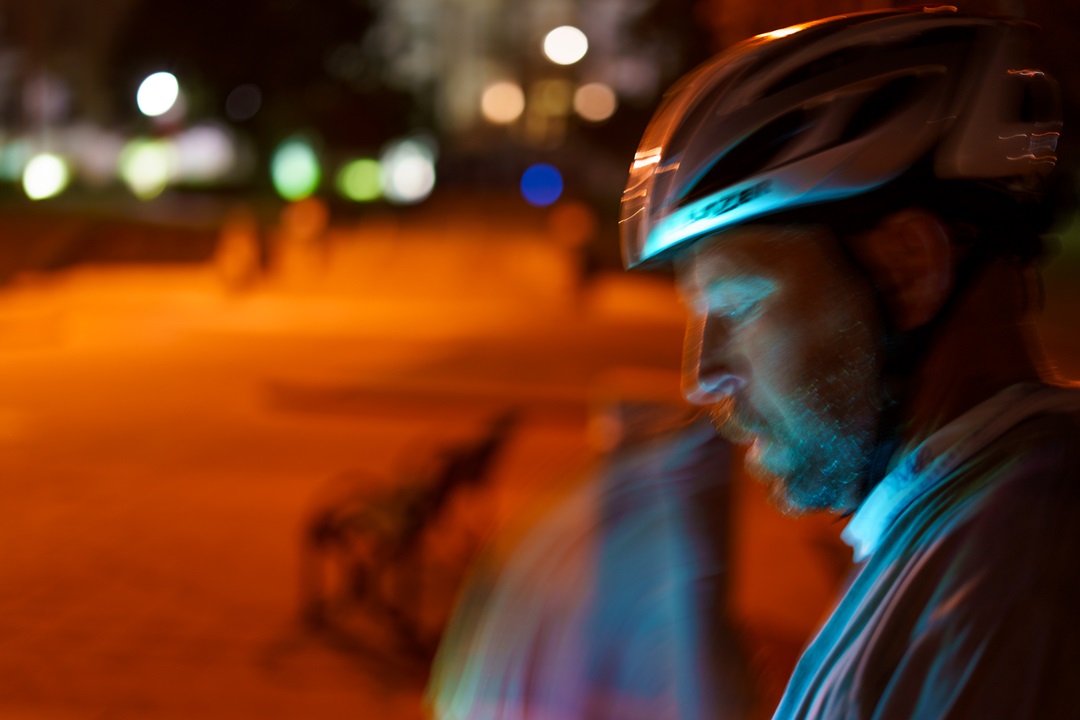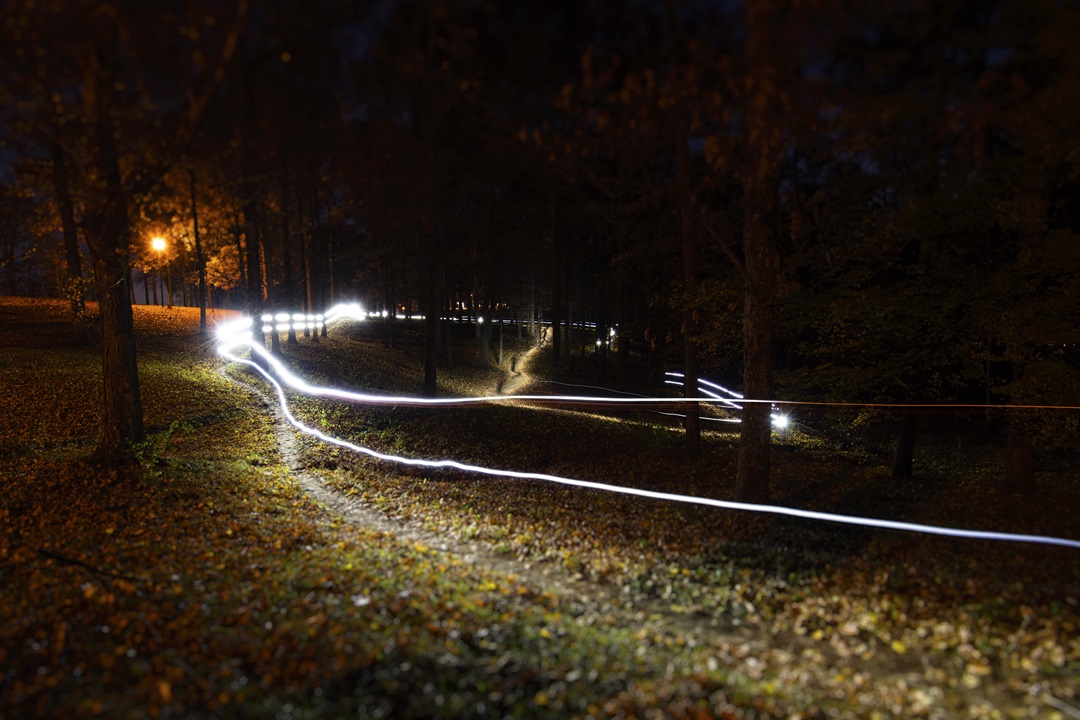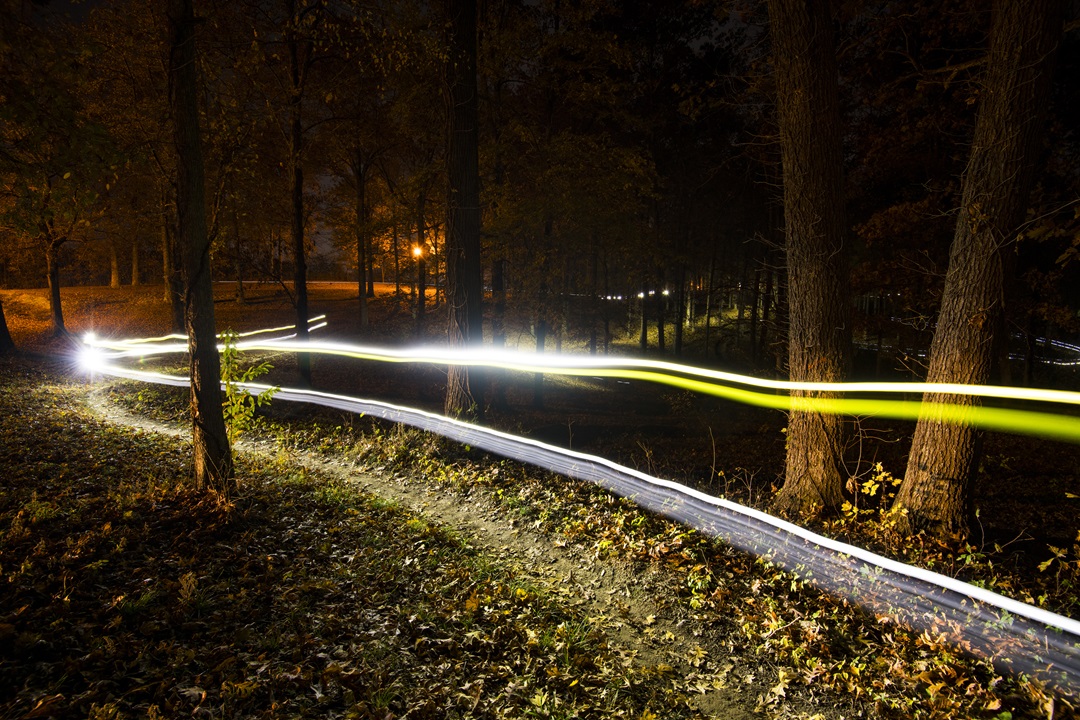Some of my favorite bike rides have been at night. I love being enveloped by the dark sky, following the path lit by my bike light and the moon. Sounds become more distinct and travel farther. Scents are more robust and seem to hang around longer. My imagination runs wild. Depending on where I’m riding, I feel a deeper connection to nature or my community as I explore these often-familiar spaces from a different perspective.
As thrilling as riding at night can be, though, it also presents a distinct set of risks. According to the National Highway Traffic Safety Administration, fatal bicycle accidents are three times more likely to occur at night than during daylight hours. The Insurance Institute for Highway Safety reports that nearly 50 percent of all fatal bicycle accidents occur between 6 p.m. and midnight, highlighting the visibility challenges cyclists face during these hours.
I talked to several Midwest cyclists with different riding styles to get their input on maximizing safety and enjoyment on a bike ride at night. Here are their tips.
Lights, lights, lights. Visibility is the most critical aspect of night riding. Cyclists should use 1000+ lumen headlights aimed at the ground to avoid blinding others.
Justin White, an avid cyclist who regularly organizes social night rides in his community, says, “Head and taillights are the most important part of night rides. Without lights, you’re invisible to cars and pedestrians. You want to do everything you can to let them know you’re there. It’s also not a bad idea to bring an extra headlamp in case one of your lights dies.”
Ryan Bruce, a gravel cyclist who competes in ultra bikepacking events, recommends, “Always, always have a taillight when riding on roads. Get the brightest taillight possible, and it is easier to be seen at night when it is flashing.”
Matt Johnson, owner of Loki Events and an experienced mountain biker, says he always has two sources of light when he is riding singletrack — one on the handlebars and one on the helmet. He also says mountain biking is the one style of riding that doesn’t require a taillight when riding at night.

(Missy Phegley)
Stay visible to motorists, pedestrians, and other cyclists. As important as it is to be able to see at night, it is equally important to ensure that you are seen. Lights will make you more visible, but cyclists should also avoid drivers’ blind spots. Signal your intentions early — with hand signals and/or vocally — to give others ample time to react. White advises to “be predictable, so drivers and other cyclists aren’t caught off guard.”
Familiarize yourself with your route in advance. Night riding can require heightened awareness and careful navigation. Knowing the terrain and potential hazards helps you stay alert. Riding at a moderate speed is important to give yourself more time to react to unexpected obstacles or situations.
Terry Crocker, an Ironman triathlete who has competed at Kona several times, recommends staying off busy roads at night and riding when traffic is less congested.
Kate Geisen, a gravel and touring cyclist, says night riding is fun because it makes familiar places seem new, but she recommends cyclists have a good navigation system. “You may not recognize those familiar places, and being lost in the dark can feel even more intimidating.”
Geisen also says the wildlife you may see is different and often more active at night. Because of this, it’s important to stay aware and watch out for animals crossing the road or trail.
Dress for the conditions. Always wear a helmet — no exceptions. Kris Baranovic, a bike commuter who didn’t own a car for over a decade, reminds us that “the pitch of evening swallows potholes and other road hazards. Getting a little sweaty is far better than scalp staples.”
Wear bright, reflective clothing to enhance your visibility. Proviz (provizsports.com) makes an amazingly bright line of jackets, vests, pants, gloves, and booties.
Temperatures can drop at night, so layering up helps you stay warm and focused on the ride. Bruce says to always have quick access to a jacket and arm or leg warmers, depending on the season.
Wear glasses with clear or yellow lenses to protect your eyes from bugs, dust, and other hazards like tree branches.

(Tim Vollink)
Check your bike and gear before the ride. Ensure your chain is lubricated, tires are properly inflated, and brakes are functioning correctly. Address any issues to avoid mechanical problems in the dark. Check that your lights are functioning correctly and that your battery is fully charged or that you have spare batteries. Carry a basic toolkit, including a tire patch kit, pump, and multitool.
Bruce always carries a headlamp even though he has a helmet light. “That way, you can see stuff when you are looking for things, and the extra light will help if you have to do bike repairs.”
Whenever possible, ride with a companion. Baranovic says, “Safety in numbers is a real thing, but equally important is sharing wonder with others.” The ride should only go as fast as the slowest rider.
Nighttime cycling requires extra precautions but can be an incredibly rewarding experience. Always prioritize visibility, follow traffic laws, and prepare for the unique challenges of riding in the dark. By following these tips, you can enjoy the peaceful charm of night rides while staying safe and visible.
And maybe you’ll build unforgettable experiences similar to this one from Geisen: “Some of my favorite bikepacking memories are from getting up in the dark, riding in moonlight, and getting to watch the sun come up from the saddle. I rode through a herd of elk early one New Mexico morning, and that’s the kind of experience I’ve never had in daylight.”
Author: Missy Phegley is a frequent contributor to Terrain.
Top image: Tim Vollink.


Leave A Comment